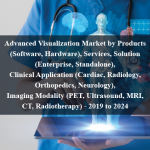OVERVIEW
Research by Global Market Studies has reported a CAGR of 5% for the Blood Gas Analyzer/Blood Gas and Electrolyte Analyzer Market, expecting to expand to a value of USD 88.51 million by 2028.
A Blood Gas Analyzer measures blood parameters like pH, CO2, O2, and electrolytes to assess a patient’s acid-base balance, oxygenation status, and electrolyte levels. These analyzers help monitor metabolic and respiratory status, lungs function, and oxygen delivery.
Blood gas analysis is essential in critical care units, operating rooms, emergency departments, neonatal units, respiratory therapy, cardiology, renal disease management, and sports medicine to monitor patients’ respiratory and metabolic status, ensuring patient safety and adjusting ventilation.
Table of Content
Market Dynamics
Drivers:
The demand for blood gas analyzers in point-of-care settings like emergency departments, ICUs, and operating rooms is increasing due to the need for quick diagnostics and critical decision-making. The increasing incidence of respiratory and metabolic disorders, such as COPD and diabetes, has led to the need for regular monitoring of blood gases and electrolytes. Technological advancements have led to the development of compact, user-friendly, and automated blood gas analyzers, improving accuracy and reducing turnaround time.
The increasing geriatric population also contributes to the growth of the blood gas analyzer market. Rapid growth in point-of-care testing facilities in various healthcare settings has increased the demand for compact and portable blood gas analyzers. Personalized medicine requires real-time monitoring of patient conditions, and blood gas analyzers provide essential data for tailoring treatments and interventions to individual patient needs. Emphasis on patient safety is crucial for blood gas analysis, further driving the adoption of blood gas analyzers.
Opportunities:
Blood gas analyzers offer a comprehensive view of a patient’s respiratory and metabolic status by measuring multiple parameters in a single sample. They are portable and point-of-care, making them valuable in emergency and critical care situations. Modern analyzers often come with automation features, improving workflow efficiency and integrating with electronic health record (EHR) systems. User-friendly interfaces reduce the learning curve and error risk. Manufacturers provide calibration and quality control solutions to ensure test results’ accuracy and reliability.
Data management and analysis software assists healthcare providers in making informed decisions based on historical data. Customizable test panels allow healthcare facilities to tailor the analysis to their specific needs and patient populations. Maintenance and support services are offered by manufacturers to ensure the analyzers are functioning optimally and address any technical issues.
Restraints:
Blood gas analyzers are expensive medical devices with advanced technology, which can hinder adoption in smaller healthcare facilities and resource-limited settings. Interpretation of blood gas results is complex, requiring healthcare professionals’ expertise for accurate diagnosis and treatment decisions.
Limited availability in developing regions can hinder access to timely and accurate diagnostics. Regular maintenance and calibration requirements for blood gas analyzers add operational costs and logistical challenges. Additionally, alternative technologies like pulse oximetry and non-invasive monitoring may offer alternatives to blood gas analysis, potentially affecting demand for blood gas analyzers.
Regional Information:
North America: This region has a well-established healthcare system and high awareness about advanced medical technologies. Blood gas analyzers are commonly used in various healthcare settings, including hospitals, clinics, and research institutions.
Europe: Similar to North America, Europe has a developed healthcare infrastructure, contributing to the adoption of blood gas analyzers. These devices are integrated into critical care units, surgical departments, and emergency care facilities.
Asia-Pacific: The Asia-Pacific region has seen significant economic growth and healthcare development, leading to increased adoption of advanced medical technologies. Blood gas analyzers are being adopted in larger healthcare facilities and urban centers.
Recent Developments:
• In June 2022, Sysmex America Inc., a leading name in the diagnostics solutions marketplace, received FDA clearance for the addition of a new feature to its N-10 Automated Hematology Analyzer with Blood Bank mode. This is the first automated analyzer to be cleared for residual WBC counting.
• In April 2021, Siemens healthiness has launched the epoc Blood Analysis System, It is a handheld, wireless solution with complete blood gas, a basic metabolic panel, and hematocrit and lactate on a single room temperature-stable test card, delivering patient-side results in less than 1 minute. It aids in supporting COVID-19 response efforts, where blood gas testing plays a critical role in managing infected patients.
Key Players:
Abbott Laboratories, Siemens Healthineers, F Hoffman La Roche, Medica Corporation and Danaher Corporation.
Frequently Asked Questions
1) What is the projected market value of the Blood Gas Analyzer/Blood Gas and Electrolyte Analyzer Market?
– The Blood Gas Analyzer/Blood Gas and Electrolyte Analyzer Market is expected to reach a value of USD 88.51 million by 2028.
2) What is the estimated CAGR of the Blood Gas Analyzer/Blood Gas and Electrolyte Analyzer Market over the 2023 to 2028 forecast period?
– The Blood Gas Analyzer/Blood Gas and Electrolyte Analyzer Market is expected to grow at a CAGR of approximately 5% from 2023 to 2028.
3) Who are the key players in the Blood Gas Analyzer/Blood Gas and Electrolyte Analyzer Market?
– Abbott Laboratories, Siemens Healthineers, F Hoffman La Roche, Medica Corporation and Danaher Corporation.
4) What are the drivers for the Blood Gas Analyzer/Blood Gas and Electrolyte Analyzer Market?
– The demand for blood gas analyzers in point-of-care settings is increasing due to rapid diagnostics, critical decision-making, and monitoring of respiratory and metabolic disorders. Technological advancements improve accuracy and reduce turnaround time.
5) What are the restraints and challenges in the Blood Gas Analyzer/Blood Gas and Electrolyte Analyzer Market?
– Blood gas analyzers’ expensive, advanced technology may hinder adoption in smaller facilities, limited resources, and developing regions due to complex interpretation and operational challenges.
6) What are the key applications and offerings of the Blood Gas Analyzer/Blood Gas and Electrolyte Analyzer Market?
– Blood gas analysis is essential in critical care units, operating rooms, emergency departments, neonatal units, respiratory therapy, cardiology, renal disease management, and sports medicine to monitor patients’ respiratory and metabolic status, ensuring patient safety and adjusting ventilation.
7) Which region is expected to drive the market for the forecast period?
– Asia Pacific has the highest value share in the global market and is expected to dominate shares in forecast period.
Why Choose Us?
Insights into Market Trends: Global Market Studies reports provide valuable insights into market trends, including market size, segmentation, growth drivers, and market dynamics. This information helps clients make strategic decisions, such as product development, market positioning, and marketing strategies.
Competitor Analysis: Our reports provide detailed information about competitors, including their market share, product offerings, pricing, and competitive strategies. This data can be used to inform competitive strategies and to identify opportunities for growth and expansion.
Industry Forecasts: Our reports provide industry forecasts, which will inform your business strategies, such as investment decisions, production planning, and workforce planning. These forecasts can help you to prepare for future trends and to take advantage of growth opportunities.
Access to Industry Experts: Our solutions include contributions from industry experts, including analysts, consultants, and subject matter experts. This access to expert insights can be valuable for you to understand the market.
Time and Cost Savings: Our team at Global Market Studies can save you time and reduce the cost of conducting market research by providing comprehensive and up-to-date information in a single report, avoiding the need for additional market research efforts.












